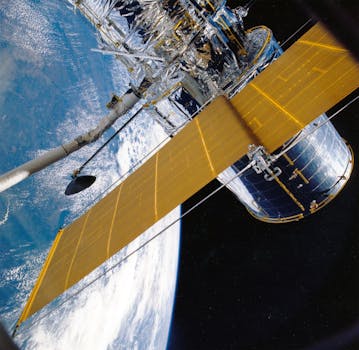
Satellite Telecommunications Technology has undergone significant transformations since its inception, evolving from a rudimentary form of communication to a sophisticated and indispensable part of modern life. The journey from ground to sky has been long and arduous, marked by numerous breakthroughs and innovations that have shaped the industry into what it is today.
The first satellite, Sputnik 1, was launched by the Soviet Union in 1957, marking the beginning of the space age. However, it wasn’t until the 1960s that the concept of satellite telecommunications began to take shape. The first commercial communications satellite, Intelsat 1, was launched in 1965, providing transatlantic communications services. This was followed by the launch of the first domestic communications satellite, ATS-1, in 1966.
Throughout the 1970s and 1980s, satellite telecommunications technology continued to evolve, with advancements in areas such as satellite design, launch vehicles, and ground equipment. The introduction of the Communications Satellite Corporation (COMSAT) in 1962 played a significant role in the development of the industry, providing a framework for international cooperation and standardization. The 1990s saw the emergence of new technologies, including digital signal processing and high-power amplifiers, which further expanded the capabilities of satellite communications.
Modern Advancements
In recent years, satellite telecommunications technology has experienced rapid growth, driven by advancements in areas such as satellite constellations, 5G networks, and the Internet of Things (IoT). The launch of low-Earth orbit (LEO) constellations, such as those developed by OneWeb and SpaceX, has enabled the provision of high-speed, low-latency internet services to remote and underserved communities. The integration of satellite communications with 5G networks has also opened up new opportunities for applications such as IoT, smart cities, and autonomous vehicles.
The development of new satellite technologies, such as phased array antennas and advanced propulsion systems, has further enhanced the efficiency and effectiveness of satellite communications. The use of artificial intelligence (AI) and machine learning (ML) has also become more prevalent, enabling the optimization of satellite operations, including trajectory planning, resource allocation, and fault detection.
Challenges and Opportunities
Despite the many advancements in satellite telecommunications technology, there are still several challenges that need to be addressed. One of the major concerns is the growing problem of space debris, which poses a significant threat to the long-term sustainability of satellite operations. The development of more efficient and environmentally friendly launch vehicles, as well as the implementation of sustainable practices, such as the use of reusable rockets, is essential to mitigating this issue.
Another challenge facing the industry is the need for increased standardization and cooperation between governments, regulatory bodies, and private companies. The establishment of common standards and protocols is crucial to ensuring seamless communication and interoperability between different satellite systems and networks. The development of new business models, such as satellite-as-a-service, has also created new opportunities for companies to provide innovative services and solutions to customers.
Conclusion
In conclusion, the evolution of satellite telecommunications technology has been a remarkable journey, marked by numerous breakthroughs and innovations. From humble beginnings to current advancements, the industry has come a long way, shaping the way we communicate and interact with each other. As technology continues to advance, it is essential to address the challenges and opportunities that arise, ensuring that the benefits of satellite telecommunications are available to everyone, regardless of their location or circumstances.

